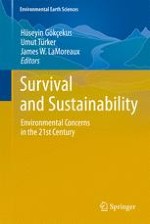2011 | OriginalPaper | Buchkapitel
Effect of Bacterial and Fungal Abundance in Soil on the Emission of Carbon Dioxide from Soil in Semi-arid Climate in India
verfasst von : Rashmi Kant, Chirashree Ghosh, Lokendra Singh, Neelam Tripathi
Erschienen in: Survival and Sustainability
Verlag: Springer Berlin Heidelberg
Aktivieren Sie unsere intelligente Suche, um passende Fachinhalte oder Patente zu finden.
Wählen Sie Textabschnitte aus um mit Künstlicher Intelligenz passenden Patente zu finden. powered by
Markieren Sie Textabschnitte, um KI-gestützt weitere passende Inhalte zu finden. powered by
